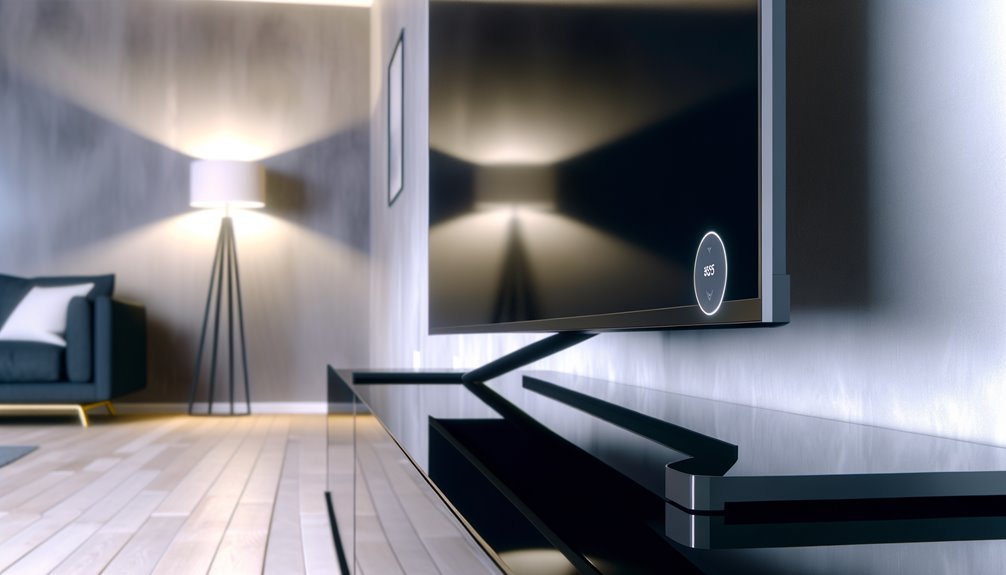When choosing between Freesat and Freeview, consider channel offerings, equipment, and reception. Freeview provides over 70 channels and 15 in HD, while Freesat offers 100+ TV channels, including 25 in HD, ideal for regions with weaker terrestrial signals. Freesat needs a satellite dish, costing between £50 and £269, while Freeview uses a TV aerial, with set-top boxes starting at £20. Both support on-demand services like BBC iPlayer, but Freesat includes additional radio and news channels. Depending on your location and setup preferences, one might suit you better. Next, let's compare signal reliability and installation details.
Key Information
- Freesat offers over 100 TV channels including all regional variations, while Freeview provides 70+ channels with varying availability by location.
- Freesat requires a satellite dish installation, whereas Freeview connects via a regular TV aerial.
- Both services support on-demand platforms like BBC iPlayer and Netflix, but Freeview also includes All4 for additional on-demand content.
- Freesat is ideal for areas with poor terrestrial signal, while Freeview's reception depends on proximity to the nearest TV transmitter.
- Freeview boxes start at around £20, while Freesat boxes range from £50 to £269.99, with potential extra costs for satellite dish installation.
Channel Availability
When comparing channel availability, Freeview provides around 70+ channels, including 15 in HD, and 32 radio stations, while Freesat offers over 100 TV channels, 30 radio stations, and 25 HD channels.
Freesat's advantage lies in its inclusion of all regional variations, ensuring extensive coverage across the UK and Channel Islands. Both platforms offer popular UK channels like BBC One, ITV, Channel 4, and more.
However, Freeview's reception can vary by location, potentially limiting your access to all advertised channels. Freesat, using satellite broadcast, generally delivers a more resilient signal.
To determine specific channel availability in your area, use coverage checkers, as it's important to take into account your geographic location when choosing between Freeview and Freesat.
On-Demand Services
Both Freeview and Freesat provide reliable on-demand services, including popular players like BBC iPlayer, ITV Hub, and My5 for catch-up TV. You'll find that both platforms also support paid on-demand services like Netflix and Prime Video, although these require separate subscriptions.
Freesat offers additional news and radio channels not available on Freeview, such as:
- Bloomberg
- GB News
- Virgin Radio
- Absolute 80s Radio
However, Freesat lacks access to All4, which Freeview includes for enhanced on-demand content.
For the latest offerings, always check the updated Freesat and Freeview channel lists. This ensures you make an informed choice based on the most current information available.
Equipment and Installation
To fully experience the on-demand services and channels provided by Freeview and Freesat, you'll need to take into account the equipment and installation requirements for each platform.
For Freesat, a satellite dish installation is mandatory for signal reception. This can be an added expense if your home doesn't already have one. Freesat boxes range from around £50 to £250, offering various features, including recording capabilities.
On the other hand, Freeview connects to a regular TV aerial, which many households already have. Freeview set-top boxes or PVRs start from £20 for basic models.
Both platforms offer advanced options that include live TV recording, enhancing your viewing experience. Choose based on your current setup and installation preferences.
Cost Comparison
Comparing the costs of Freeview and Freesat, you'll find that Freeview set-top boxes range from £40 to £179, while Freesat boxes span from £50 to £269.99.
Freeview offers a cost-effective solution with additional charges for HD channels and recording features.
Freesat, on the other hand, requires an initial investment but remains more affordable than other satellite TV options.
- Freeview boxes: £40 – £179
- Freesat boxes: £50 – £269.99
- Built-in TV options: Consider TVs with integrated Freeview/Freesat for a seamless setup
- Installation: Freesat may involve additional satellite dish installation costs
Both options have their expenses, but the choice depends on your specific needs and budget.
Reception and Coverage
Reception and coverage are critical factors when deciding between Freesat and Freeview. Freesat relies on satellite broadcasts, requiring a satellite dish installation for consistent reception. This makes it ideal for areas with poor terrestrial signal. On the other hand, Freeview depends on terrestrial signals from transmission towers and uses a regular TV aerial. To determine your Freeview signal quality, check the proximity of the nearest TV transmitter.
Both services need a set-top box or a TV with built-in capabilities. Understanding the technical differences between satellite and aerial TV reception helps you choose the right service for your location. This ensures the best viewing experience based on your area's reception capabilities.
Frequently Asked Questions
Which Is Better, Freeview or Freesat?
You'll need to decide based on your needs. Freesat offers more channels and a resilient signal but requires a satellite dish. Freeview is simpler with fewer channels, using a regular aerial, but may have coverage issues.
Is Freesat Being Phased Out?
No, Freesat isn't being phased out. It continues to offer over 200 TV and radio channels with a reliable satellite signal. You can still purchase Freesat boxes from various manufacturers, ensuring diverse and resilient content options.
Can I Use Freesat Without a Satellite Dish?
No, you can't use Freesat without a satellite dish. The dish is essential for receiving Freesat signals. Installing one is mandatory for accessing Freesat channels, as it captures the broadcast signals from the satellite.
Do You Need Freesat if You Have a Smart Tv?
You still need Freesat if you have a Smart TV, as Smart TVs might lack built-in Freesat tuners. Freesat provides over 200 channels and features like recording and pausing, enhancing your viewing experience beyond Smart TV capabilities.
Conclusion
So, when deciding between Freesat and Freeview, consider your priorities. Freesat offers a wider range of channels and better reception in remote areas, while Freeview provides easier installation and no need for a satellite dish.
Both offer on-demand services, but equipment costs can vary. Assess your specific needs considering channel availability, installation complexity, cost, and reception reliability to make an informed choice.
Each platform has its unique advantages to suit different preferences.



